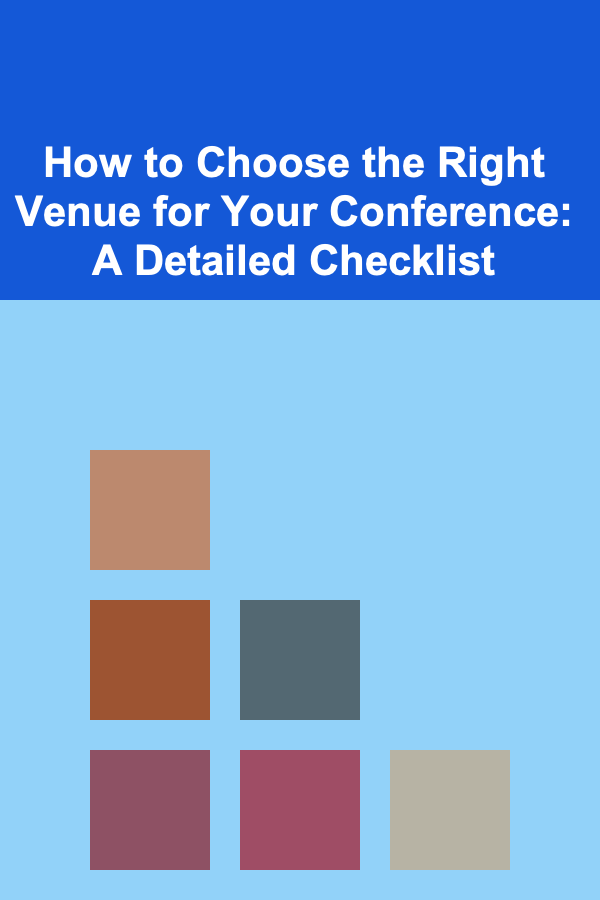
How to Paint Abstract Art with Palette Knives
ebook include PDF & Audio bundle (Micro Guide)
$12.99$5.99
Limited Time Offer! Order within the next:
Not available at this time

Abstract art offers a boundless realm of creativity, where the rules of representation are bent, twisted, and even discarded. One of the most unique tools that an artist can use in this genre is the palette knife. Known for its ability to create thick, textured layers of paint, the palette knife provides a tactile, almost sculptural way of working with paint. Whether you're an experienced artist looking to explore new techniques or a beginner hoping to try something different, learning how to paint abstract art with palette knives can open up a world of exciting possibilities.
In this article, we'll take an in-depth look at how to paint abstract art with palette knives, exploring the techniques, tools, and strategies that will help you create stunning and expressive artworks. From understanding the palette knife's role in abstract painting to mastering texture-building and layering, we'll guide you step by step through the process.
The Palette Knife: A Powerful Tool in Abstract Painting
The palette knife, typically used for mixing paint on a palette, can also be used for applying paint directly to the canvas. Unlike brushes, which are primarily used for drawing lines, the palette knife allows artists to create bold strokes, rich textures, and even highly layered compositions. The flat edge and flexibility of the knife enable varied strokes, from sharp, defined edges to soft, blended textures. It can be used to scrape away paint, layer it thickly, or carve into already-dried layers to expose the underlying texture.
The Versatility of the Palette Knife
- Create Texture: One of the most significant advantages of using a palette knife in abstract art is its ability to build texture. The thick application of paint produces a dynamic surface that invites viewers to experience the piece in a more tactile way.
- Bold, Broad Strokes: Palette knives are excellent for creating broad, sweeping strokes, adding energy and dynamism to your work.
- Layering and Scraping: The knife can be used to build up layers of paint and then scrape back through them, revealing previous layers or creating a distressed, weathered effect.
- Spontaneity: The lack of precision associated with the palette knife can often lead to more spontaneous, organic compositions. The process can feel freeing, encouraging an intuitive and experimental approach.
Tools You'll Need
Before you begin creating abstract art with palette knives, it's essential to gather the right tools. While the palette knife itself is the most important instrument, other materials will contribute to the success of your work.
Palette Knives
There are different types of palette knives available, each offering unique effects.
- Flat Palette Knives: These are the most commonly used palette knives. They have a flat, wide blade, perfect for spreading and scraping paint across the canvas.
- Tapered Palette Knives: These knives have a narrower blade and are ideal for creating sharp lines or intricate textures.
- Diamond or Triangular Knives: These knives can create even more angular textures, adding a bit of variety to your toolset.
It's important to experiment with different types of palette knives to see how each affects the paint and your work's texture.
Paints and Mediums
When working with palette knives, thicker paints work best. Acrylics and oils are the most commonly used paints for palette knife work, as they can be applied in thick layers and manipulated into varied textures.
- Acrylic Paints: Acrylics are a versatile choice. They dry quickly, allowing you to layer them and manipulate them without worrying about long drying times. However, they can become more difficult to spread once dry, so be sure to work quickly.
- Oil Paints: Oil paints remain workable for a longer period, giving you more time to experiment and refine your texture. They can be manipulated to create deep, rich layers.
- Mediums: You may choose to mix your paints with mediums to adjust the consistency, drying time, or finish. For example, using a modeling paste can make the paint thicker, which is perfect for building up texture.
Techniques for Painting Abstract Art with Palette Knives
Creating abstract art with palette knives requires both creativity and technique. Below, we'll explore some of the fundamental techniques that will help you get started.
1. Layering and Building Texture
Abstract art is often about expressing emotion and form through texture. With a palette knife, you can create thick layers of paint that add depth and dimension to your work.
- Apply Thick Layers: Start by applying a generous amount of paint to the canvas using the palette knife. Use the flat edge of the knife to spread the paint evenly, or use the edge of the knife for more specific strokes. Experiment with various angles and pressure to achieve different textures.
- Multiple Layers: Once the first layer is applied, let it dry and then apply additional layers. Each layer can have its own texture or color, creating a dynamic interplay between the layers. You can also use a knife to scrape away some of the top layers to reveal the colors and textures underneath.
2. Impasto Techniques
The impasto technique involves applying paint in thick layers, sometimes to the point where the brushstrokes are visible on the surface. This method adds a tactile quality to your abstract artwork and creates an almost sculptural effect.
- Building Volume: Using the palette knife, apply thick, layered strokes of paint to the canvas. This could be done in patches or areas of the canvas to create contrasts in texture and depth.
- Layer and Scrape: After building up an impasto surface, scrape parts of the paint away with the edge of the palette knife. This exposes the underlayers and adds additional texture to the artwork.
3. Scraping and Revealing Underlying Layers
One of the fascinating aspects of abstract painting with palette knives is the ability to scrape away the paint to reveal underlying layers. This can create a sense of depth and history within your painting.
- Scrape Back: After applying a thick layer of paint, use the edge of your palette knife to scrape portions of the paint back. This can reveal the base layer or expose parts of the canvas, which adds an element of surprise to the piece.
- Create Contrasts: Scraping away the paint can also create sharp contrasts in texture, as areas of smooth paint interact with scraped areas of rough texture or exposed canvas.
4. Creating Lines and Strokes
While palette knives are typically used for texture, they can also be employed to create beautiful lines and strokes that can guide the composition of your abstract artwork.
- Bold, Geometric Lines: Use the flat edge of the knife to create wide, geometric lines. These lines can be bold and clean, helping to balance out the more organic textures in your piece.
- Delicate Strokes: Use a smaller, tapered palette knife to create finer lines. These lines can add a sense of movement and fluidity to your work.
5. Adding Color and Contrast
Abstract art is all about expression and emotion, and color plays a huge role in conveying this. The palette knife allows you to apply color in different ways to create contrast and harmony.
- Monochromatic Palette: Work with varying shades of one color to create a cohesive look. The palette knife is great for blending these colors together to create gradients and smooth transitions.
- Bold Color Contrasts: Alternatively, use contrasting colors to create drama and impact. Applying one color over another and scraping or blending them with the palette knife can create dynamic contrasts.
Tips for Successful Palette Knife Painting
- Practice and Experiment: The palette knife can be a tricky tool to master, so it's important to practice regularly. Don't be afraid to experiment with different techniques and textures. The more you play with the medium, the more comfortable you will become.
- Vary Your Pressure: The pressure you apply to the palette knife will greatly influence the outcome. A light touch will create delicate textures, while heavy pressure will result in thick, expressive strokes.
- Use the Right Amount of Paint: Too little paint can make the process tedious, while too much paint can overwhelm the canvas. Finding the right balance will make your palette knife painting process more fluid and enjoyable.
- Let Layers Dry: Depending on the paint you use, letting each layer dry before applying the next can help prevent smudging and give you better control over texture.
Conclusion
Painting abstract art with palette knives is a rewarding and dynamic process that encourages experimentation and exploration. The palette knife opens up endless possibilities for texture, color, and composition, and it can help you create powerful, tactile works of art. By understanding the techniques and tools involved, you can unlock the full potential of this versatile instrument and express yourself in new and exciting ways.
So, whether you're a beginner or a seasoned artist, grab your palette knife, explore the texture-rich world of abstract painting, and enjoy the freedom it offers to create bold, expressive art.

How to Avoid Common Money Mistakes and Set Yourself Up for Success
Read More
How to Choose the Right Venue for Your Conference: A Detailed Checklist
Read More
How to Create a Tool Maintenance Schedule
Read More
The Best Coupon Deals You Need to Know About This Season
Read More
How to Choose Sustainable and Ethical Food Options
Read More
10 Tips for Exploring Tide Pools Responsibly
Read MoreOther Products

How to Avoid Common Money Mistakes and Set Yourself Up for Success
Read More
How to Choose the Right Venue for Your Conference: A Detailed Checklist
Read More
How to Create a Tool Maintenance Schedule
Read More
The Best Coupon Deals You Need to Know About This Season
Read More
How to Choose Sustainable and Ethical Food Options
Read More